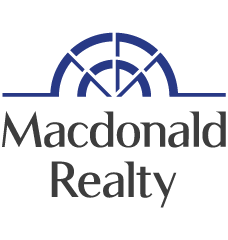 That feeling of accomplishment when you’ve finally found the home you want to purchase is well-deserved. Whether you looked at 10 homes or 50 in your quest to find the right one, you are one step closer to holding those keys in your hand.
That feeling of accomplishment when you’ve finally found the home you want to purchase is well-deserved. Whether you looked at 10 homes or 50 in your quest to find the right one, you are one step closer to holding those keys in your hand.
The offer to purchase is one of the most significant documents you’ll ever put your signature to, so it’s important to think about it strategically before doing so. Here are a few things to think about.
- Your house payment won’t be the only money you’ll spend on this home every month. Ask the seller for a ballpark figure of how much he or she pays for utility bills every month. If it’s significantly higher than what you’re accustomed to, it may push your monthly housing budget over your limit.
- Don’t forget to take into account the monthly strata fee, if you’ll be buying in Condo or a managed Townhome.
- Finally, ensure that the home is priced appropriately for the area and for the type of market we’re in. We are happy to run an analysis to provide you with the home’s current market value.
Now, back to the Offer to Purchase
There is much to consider when filling out the offer to purchase, but here are the most important things for you to think about.
How much should you offer?

If we were currently in a buyer’s market, where there are many homes for sale but few buyers in the market, you would have more leverage in negotiations with the seller.
Alas, it’s a seller’s market (few homes for sale and lots of buyers clamoring for them), so you’ll need to sweeten your offer, either by meeting the asking price or softening the contract’s terms.
One of the things we will help you with is determining if the home is priced right. An important question to ask is what percentage of the asking price are area sellers realizing?
The condition of the home is important to its market value as well. A well-maintained, clean home in move-in condition should sell close to asking price (if it’s priced at market value).
Rundown homes, or those that need substantial work, should be priced accordingly. If not, then you have some negotiating power.
Anatomy of the Offer to Purchase
“The deposit”

This is money that you’ll submit to the seller either with the offer to purchase or shortly after it is accepted. This is not the down payment (which is a lender requirement), but a good-faith offer to show you’re serious about buying the home.
The amount of money you’ll be asked for depends on a number of factors. The good news is that this money eventually goes toward the purchase and will reduce your closing costs.
Personal property
The home and land are considered real property and anything that isn’t attached to the home or land is considered personal property.
Sellers often include (and buyers often ask for) personal property in the purchase of the home. This includes:
- Gardening equipment: Snow blowers, lawn mowers, cultivators and tools.
- Appliances that aren’t built in: This includes the washer, dryer, refrigerator, stove and microwave, if they aren’t built-in.
- Furniture and window coverings: If you want either or both, we’ll need to ask for them in the offer to purchase if it isn’t stated in the listing that they remain in the home.
When do you want to close?
This may seem like a straightforward question until you understand the different strategies. If you close toward the end of the month you’ll save money because your prorated interest payment at closing will be smaller.
If you’re crunched for cash, however, you may want to close earlier in the month. Yes, the pre-paid interest amount will be higher but, because it’s paid in arrears, you won’t owe your first mortgage payment for two months. Speak with your lender about which scenario fits your financial circumstances.
If you are purchasing the home near the fall and winter holidays either set the closing date well before or after. Real estate professionals, including lenders, title folks and real estate agents tend to take time off during the holidays and, naturally, work slows down.
The home inspection contingency

Never waive it ― even if you’re buying a newly-constructed home.
As the ink dries on your offer to purchase, a flurry of activity begins taking place behind the scenes. I’ll get together with the listing agent to make arrangements for the seller to receive your offer.
The seller will accept it, submit a counter offer with a different price, terms or both, or reject it. If the offer is accepted, the closing process starts, the clock starts ticking and time is of the essence.
Questions? Feel free to reach out; we are happy to answer them.
About the Author:

The above article on Navigating the offer to purchase a home was provided by Regan Pyke, a leader in the field of sales, marketing, and Real Estate Investing. Regan can be reached via email at [email protected] or by phone at 778-228-2448.
Thinking of selling your home? I have a real passion for buying and selling Real Estate, as well as marketing & real estate investing. I’d love to share my expertise!

